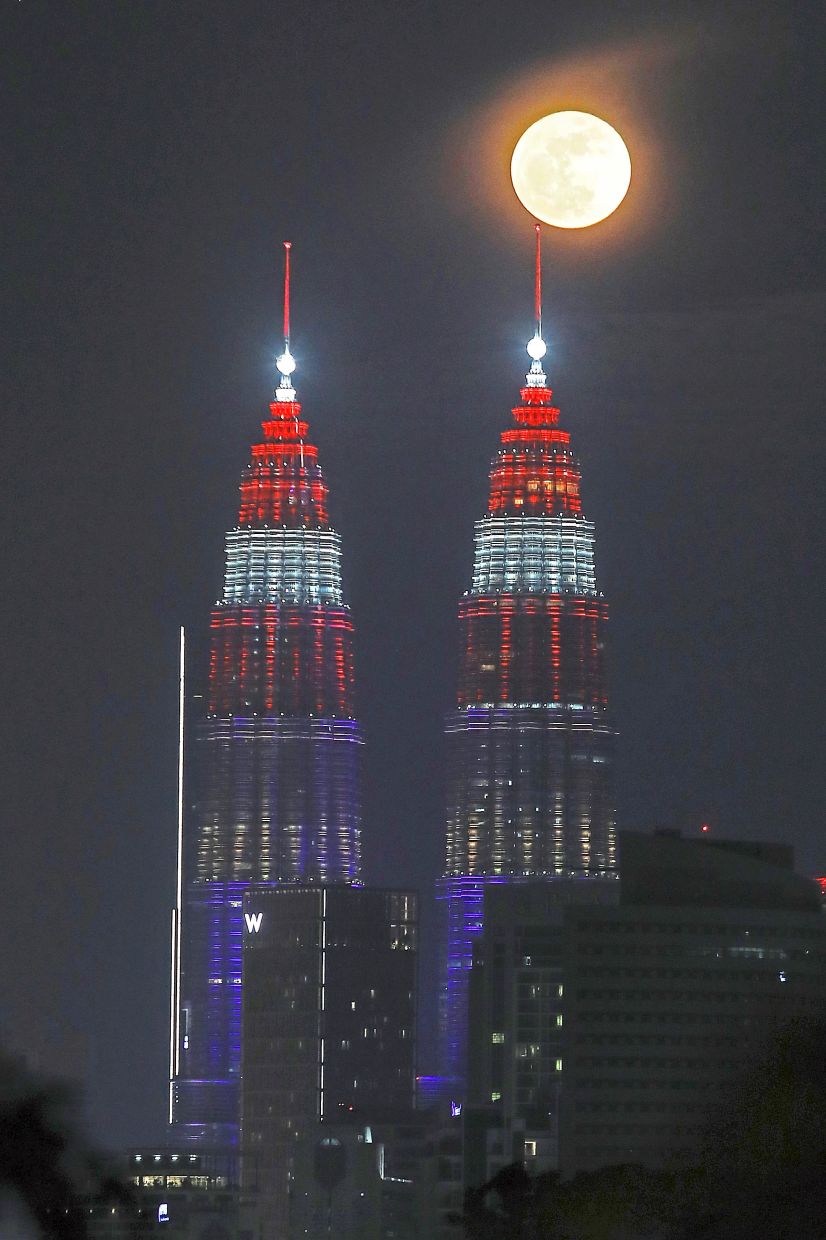The full super blue moon appearing by Kuala Lumpur’s iconic landmark and its progression was a delight.
ARMED with telephoto lenses and portable telescopes, many gathered at Changkat Tunku Lookout Point in Kuala Lumpur to see the brightest moon.
It was the second opportunity for stargazers to see the super blue moon on Aug 30 after the first round on Aug 2.
The super blue, visible in various parts of the country and also around the world, is when a supermoon – moon closest to Earth – meets a blue moon, which is when two full moons happen in a month.
On Sept 29, the final supermoon for the year is expected.
Close to the nearest point to the earth in its orbital cycle around the earth, the moon will be easily visible, depending on the weather.
According to a Malaysian Space Agency (MYSA) spokesperson, the super blue appeared 7% larger than the average full moon and was much brighter.
Astronomical applications such as TheSky, SkySafari and Stellarium can be used to check the timing of the full moon rising and setting according to location.
After Sept 29, the next super blue moon phenomenon will occur in January and March 2037, according to National Aeronautics and Space Administration (NASA).
Most of the time, 25% of full moons are supermoons but only 3% are blue moons.
According to NASA, blue moons do not actually appear blue, although it can seem so if airborne particles, consisting of smoke or dust, scatter away red wavelengths of light.








